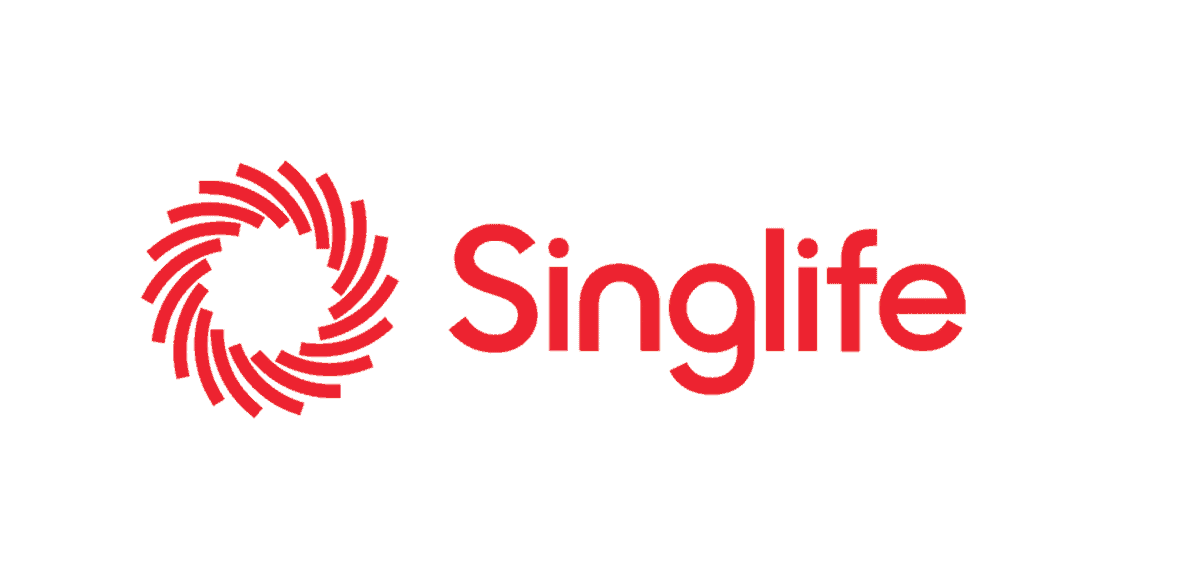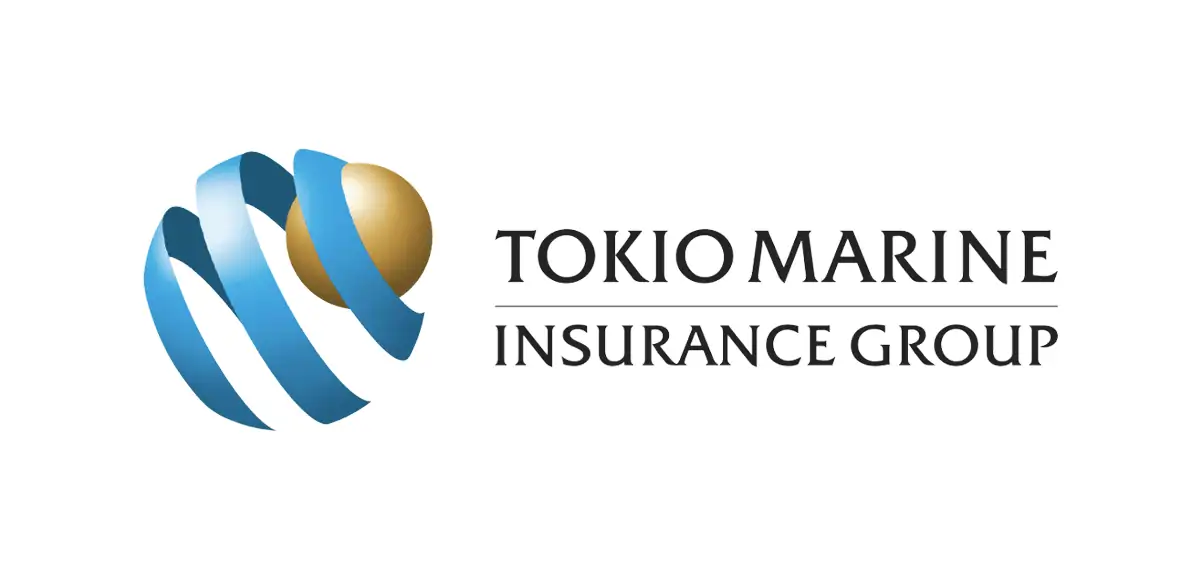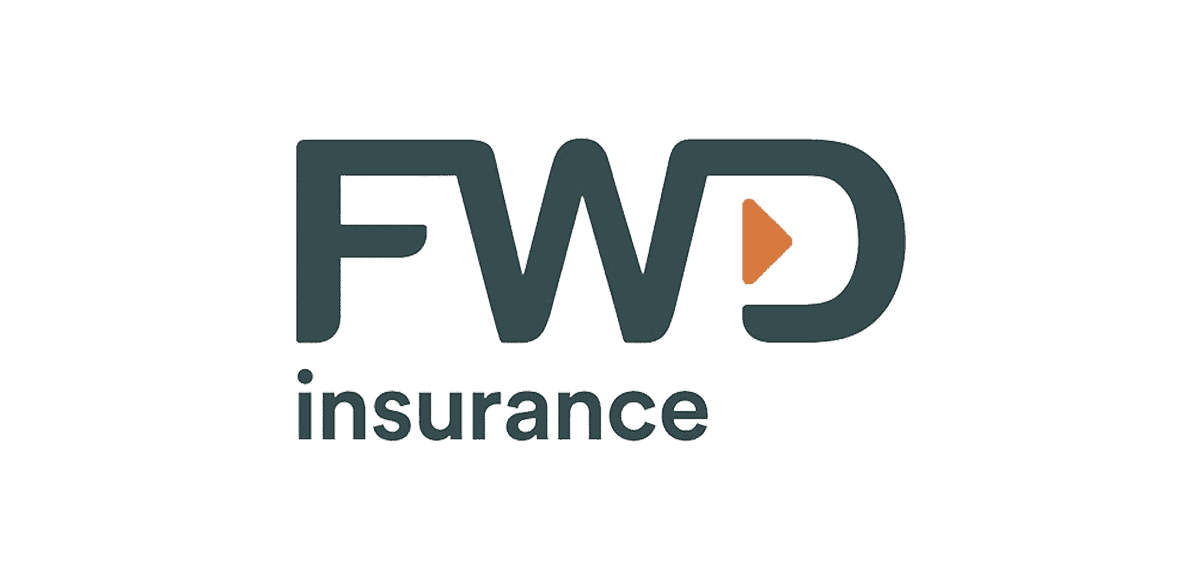Critical illness (CI) insurance is ideally one of the first few insurance plans you get once you enter the working world.
The reason is that if you were to – touchwood – get diagnosed with a CI, the cost would burn a hole in your wallet and significantly impact your standard of living.
As a plan that should be part of your insurance starter pack, it’s probably the least beginner-friendly as it’s arguably the hardest to understand out of all the different types of insurance plans.
With the myriad of different CIs, the different stages, and all the terms and conditions that affect what you can claim and much more, it’s not easiest to wrap your head around.
But not to worry, we’ve looked at the best critical illness insurance plans in Singapore and selected ones that are the best for different types of individuals.
Once that’s out of the way, we’ve prepared a comprehensive guide that identifies the key factors you should look out for when you’re looking for a CI plan and breaks down the different terms for the layman to understand.
We’ll make choosing your CI insurance a piece of cake – let’s get that slice today.
Before we continue explaining why each of these plans deserves the best for each category, here’s a detailed comparison across different CI plans in Singapore.
This is critical as it forms the basis of our picks.
Comparison of the Best Critical Illness Insurance Plans in Singapore
| Policy Name | Policy Term | No. of Critical Illnesses Covered | No. of Juvenile Conditions Covered | No. of Special Conditions Covered | Max Sum Assured | Multipay? | Notable Features | Premium | Total CI | Cost/CI |
| AIA Absolute Critical Cover | – up to 65, 75, or 100 years old | 150 | – | 25 Special Conditions, 13 Pre-Early Conditions with a maximum limit of $25k |
350k | Yes, 500% | Offers protection against 187 conditions (ECI/CI + Special Conditions), Safety Net Cover Benefit, Maturity Benefit, Surrender Benefit, Child Premium Benefit, various riders | 1999 | 187 | 10.6898396 |
| Singlife Comprehensive Critical Illness | Min 10 years, up to 99 years old | 132 |
16; Able to claim up to 6 times 20% of SA up to $25k |
11; Able to claim up to 6 times 20% of SA up to $25k |
250k | No | $5,000 Death Benefit Additional 20% of SA of up to 25k if you’re hospitalised in ICU for more than 4 days coverage amount can be in SGD, USD, GBP, EUR, AUD or HKD |
920 | 159 | 5.78616352 |
| Singlife Multipay Critical Illness | From 10 years to 99 years old | 132 |
11; Able to claim up to 6 times, 20% of SA, up to $25K |
16; Able to claim up to 6 times, 20% of SA, up to $25K |
250k | Yes, 900% |
– On your 1st Severe Stage CI claim for an eligible CI, you can opt to claim an additional 100% of your SA on top of what is already claimable, but your recurrent benefit will cease – Benign and Borderline Malignant Tumour Benefit for excision in 22 specified organs – ICU Stay Benefit for 4 days stay or longer – 5K death benefit – Waiver of premiums when 300% of SA is paid out |
1465 | 159 | 9.21383648 |
| AIA Beyond Critical Care |
– to age 85, or – 30 years |
43 CIs & 5 rediagnosed CIs (advanced stage only); or 104 CIs (if you add on Early Critical Cover Extra Rider) |
– | – | 3M | Yes, 200% |
– Up to 100% of the base plan’s total annual premiums are refunded to you at the end of the policy term, less any claims made – Coverage for 5 mental illness – 100% death benefit, less any CI claims – $10K compassionate benefit – up to $200 health screening benefit – access to AIA Critical Assist & Teladoc health |
2043.8 | 152 | 13.4460526 |
| Manulife CI FlexiCare (Deluxe) | To Age 65 To Age 75 To Age 85 To Age 99 |
126 |
13; Able to claim up to 6 times 20% of SA up to $25k |
30; Able to claim up to 6 times 20% of SA up to $25k |
250k | Yes, 800% | Comprehensive coverage for early, intermediate, advanced-stage CIs, Special CI Conditions Benefit, Advanced Stage CI Booster, Recovery Care Plus Benefit, Serious Illness of a Child Benefit, Optional Add-On Riders | 1,542.80 | 169 | 9.124260 |
| HSBC Life Super CritiCare |
– to age 50, 55, 60, 65, 70 or 75, or – Renewable term: 5, 10, 15, 20, 25 or 30 years |
111 |
10; Able to claim up to 3 times, 10% SA up to S$25K |
11; Able to claim up to 5 times, 10% SA up to S$25,000 |
1M | Yes, 600% |
– Diabetes care programme – 10K death benefit – Coverage for Re-diagnosed Cancer, Recurrent Heart Attack and Stroke at any stages |
1165 | 132 | 8.82575758 |
| Tokio Marine Early Cover | – to age 70, 75 or 85 | 109 |
10; Able to claim up to 5 times, 20% of SA up to $25K |
10; Able to claim up to 5 times, 20% of SA up to $25K |
350k | No |
– Waiver of premiums following advanced stage claim if the life assured < 18 – Death benefit – $2000 |
912 | 129 | 7.06976744 |
| Tokio Marine MultiCare | – to age 70, 75 or 85 | 109 |
10; Able to claim up to 5 times, 20% of SA up to $25K |
10; Able to claim up to 5 times, 20% of SA up to $25K |
350K | Yes, 900% |
– Waiver of premiums following advanced stage claim if the life assured < 18 – Death benefit – 10% of sum assured |
1515 | 129 | 11.744186 |
| Great LIFE Advantage | – whole life | 120 | – | – | Information not available | Yes, 300% |
– Hybrid whole life/CI insurance – Adjust coverage at 8 milestones – Add on multipay CI option as rider, covers recurrent cancer, heart attack and stroke – $20K child cover benefit for each child |
Information not available | 120 | #VALUE! |
| PRUEarly Stage Crisis Cover | 35 or 45 years | 84 | 4; 25% of SA up to 25k |
3 Angioplasty, 10% of SA up to 25k, |
– | No | 3k death benefit | 997 | 91 | 10.956044 |
| Great Family Care | Up to age 85 | 53 | 25; able to claim 1 time, 25% of SA up to $50K | – | 3M | No |
– Hybrid term life/CI insurance – Covers 3 generations – Rider covering parents against Cancer, Alzheimer’s, Dementia, or Parkinson’s; payout 15% of SA or $15K (whichever is higher) |
609 | 78 | 7.80769231 |
| FWD Recover First | From 5 years to age 85 | 37; Future protect benefit also covers early and intermediate CI (refer to the policy contract for complete list) | – |
10; Able to claim up to 6 conditions, of up to $25,000 each |
350K | No |
– Legal, Home Care and Emotional Support reimbursement & complementary medical second opinion support – Also covers 9 body systems, disabilities and ICU stay of at least 5 days – Sum assured for advanced CI will reset, and premiums will be waived in the event of an early/intermediate CI claim or any claim under the second bullet point – 5K death benefit |
1124 | 47 | 23.9148936 |
| PRUActive Protect | – from 10 to 99 years | 37 | 9; (if both parents buy PRUActive Protect | – | – | Yes, 500% |
– Waiver of premiums if spouse diagnosed with CI – Receive up to 50% of CI coverage on serious illnesses or accidents – Add on multipay CI option as a rider – Rider for up to 100% of SA death benefit – Rider covering ICU stay in the event of severe infectious disease – Rider to pay monthly payouts in the event of CI diagnosis |
1140 | 46 | 24.7826087 |
| Singlife Essential Critical Illness | Min 15 years, up to 85 years old | 14 | – | 4 diabetic conditions | 500k | No |
For those with pre-existing conditions such as Type 2 Diabetes, additional lump-sum payout of 20% of the SA for up to 25k for any of the 4 covered diabetic conditions advanced lump-sum payout that’s 10% of your Sum Assured, up to S$25,000, should you need to undergo Angioplasty & Other Invasive Treatments For Coronary Artery. Death benefit = 100% of SA |
353 | 18 | 19.611111 |
| Manulife Critical SelectCare | Purchasable if you’re between 40 and 70 years old | 7 | – | 2 | 250k | No |
For those with pre-existing conditions such as High blood pressure, High blood sugar, High cholesterol, or Diabetes Receive 25% of the basic sum assured if no claims have been made or paid out upon policy term due date. |
1422.8 | 9 | 158.088889 |
| FWD Big 3 | Purchase between 18 and 65 years old, with renewability up to 85 | 3 | – | – | 200k | No | FWD Care Recovery Plan 20k death benefit |
253.8 | 3 | 84.6 |
*Premiums based on 30-year-old male, non-smoker, 100K sum assured with policy term up to age 75; premiums paid on an annual basis
The above table includes the most popular ECI/CI plans in Singapore, but there are other less popular ones and gender-specific plans that were not included.
So the above table should not be taken as an exhaustive list.
Best Critical Illness Insurance Plan in Singapore

Manulife CI FlexiCare (Deluxe)
Topping the list with a compelling blend of affordability and comprehensive coverage is Manulife CI FlexiCare (Deluxe), which in my view, is the crème de la crème of CI plans available right now.
This plan strikes a harmonious balance of offering just about everything you might need, without burning a hole in your pocket.
With coverage that spans a robust 126 Critical Illnesses, it not only sets a high benchmark but also ensures you’re covered for a spectrum of health adversities.
The ability to claim up to 6 times for both juvenile and special conditions is a testament to its multipay prowess.
Its sum assured range peaks at $250k, and the flexible policy terms up to age 99 cater to diverse needs, ensuring you’re never left wanting.
The intervals between claims are reasonably set too.
The policy nuances might seem intricate at first glance, but that’s where trusted financial advisors step in, providing clarity and tailored advice.
What’s more, the plan offers comprehensive coverage across early, intermediate, and advanced-stage CIs, further enriched by benefits like the Advanced Stage CI Booster and the Recovery Care Plus Benefit, giving you an additional 200% due to advanced CIs and ICU benefits of up to 25k respectively.
The Serious Illness of a Child Benefit, brings added peace of mind for parents too.
The cherry on top?
This isn’t just a standalone CI plan, but it’s Cover Me Again feature makes it a multipay option, letting you claim for up to 400%!
Have a recurring advanced CI?
The Cover Me Again benefit gives you another 200% for 6 of the most common CI conditions.
This totals to 800% of multiclaims!
With so many things to like about the Manulife CI FlexiCare (Deluxe), there’s no wonder why it’s currently the best critical illness plan in Singapore right now – multipay or not!
Best Multipay Critical Illness Plan in Singapore (Option 2)

Singlife Multipay Critical Illness Plan
Carving a niche for itself in the realm of multipay CI plans is Singlife Multipay Critical Illness.
It’s one of my top picks, and for several compelling reasons.
Balancing premium costs with a rich bouquet of features, this plan emerges as a formidable contender in the CI landscape.
Diving into the specifics, it stands tall with coverage for a whopping 132 Critical Illnesses with the ability to claim up to 900%.
Now that’s a plan which truly understands the myriad health challenges one might face.
And, not just content with a high count, it amplifies its appeal with the ability to claim up to 6 times, including both juvenile and special conditions.
The sum assured, capped at a respectable $250k, combined with its policy term stretching from a decade to nearly a century, ensures that it’s not just about breadth but depth as well.
The intervals between claims have been thoughtfully designed as well.
A standout feature?
The option to claim an additional 100% of the sum assured on the first Severe Stage CI.
Add to that the nuanced benefits for benign and borderline malignant tumors, and the ICU Stay Benefit, and you have a plan that’s both comprehensive and compassionate.
Best Multipay Critical Illness Plan in Singapore (Option 3)

HSBC Life Super CritiCare
Stepping into the spotlight as a close contender in the multipay CI arena is HSBC Life Super CritiCare.
It’s not just a runner-up in my books but a plan that brings its own brand of excellence to the table.
Seamlessly blending affordability with a robust array of features, this plan distinguishes itself as a prudent choice for those seeking comprehensive coverage.
At its core, it offers protection against 111 Critical Illnesses, ensuring that you’re shielded against a broad spectrum of health setbacks.
The multipay facet shines brightly here, with provisions allowing multiple claims for both juvenile and special conditions, making it a true ally in challenging times.
For its base plan, it lets you claim for up to 6X as well.
With a sum assured that reaches an impressive $1M and flexible term options, it crafts a safety net that’s both wide and deep.
The waiting periods between claims are reasonably structured, and in certain scenarios, claims might even be permissible before the waiting period concludes, although the sum assured might be tapered.
A standout aspect?
The inclusion of a Diabetes care programme is a testament to its commitment to holistic health management.
Moreover, its provisions to claim for conditions like Re-diagnosed Cancer, Recurrent Heart Attack, and Stroke at any stage underline its comprehensive nature.
However, there’s always a flip side.
While HSBC Life Super CritiCare brings a lot to the table, there are certain areas where it doesn’t quite match up to its competitors.
A significant drawback is its limitation on claims for early/intermediate-stage critical illnesses.
Unlike most other multipay CI plans that allow multiple claims on the same critical illness after specific waiting periods, this plan restricts you to just one.
Moreover, irrespective of the CI stage – whether early, intermediate, or advanced – the plan only disburses 100% of your sum assured.
This becomes particularly concerning if one is diagnosed with advanced-stage CI without prior signs or regular check-ups. The 100% sum assured might fall short of covering the recommended 5-7 years of treatment.
For those prioritising extensive coverage, alternatives like Singlife’s Multipay CI or Manulife’s CI FlexiCare could be more appealing.
Not only do they promise a maximum claimable sum assured of up to 600%, but they also guarantee a payout of up to 300% of the basic sum assured for advanced-stage diagnoses.
Looking at premium differences, the lower annual premium seems justifiable, especially considering the enhanced advanced-stage CI coverage it offers.
In essence, while HSBC Life Super CritiCare has its merits, certain nuances make it crucial to weigh its offerings against individual needs and other market options.
Best Early Stage Critical Illness Insurance Plan (Option 1)
| Policy Name | Policy Term | No. of Critical Illnesses Covered | No. of Juvenile Conditions Covered | No. of Special Conditions Covered | Max Sum Assured | Multipay? | Notable Features | Premium | Total CI | Cost/CI |
| Singlife Comprehensive Critical Illness | Min 10 years, up to 99 years old | 132 | 16; Able to claim up to 6 times 20% of SA up to $25k | 11; Able to claim up to 6 times 20% of SA up to $25k | 250k | No | $5,000 Death Benefit Additional 20% of SA of up to 25k if you’re hospitalised in ICU for more than 4 days coverage amount can be in SGD, USD, GBP, EUR, AUD or HKD | 920 | 159 | 5.78616352 |
| PRUEarly Stage Crisis Cover | 35 or 45 years | 84 | 4; 25% of SA up to 25k | 3 Angioplasty, 10% of SA up to 25k, | – | Yes | 3k death benefit | 997 | 91 | 10.956044 |
| Tokio Marine Early Cover | – to age 70, 75 or 85 | 109 | 10; Able to claim up to 5 times, 20% of SA up to $25K | 10; Able to claim up to 5 times, 20% of SA up to $25K | 350k | No | – Waiver of premiums following advanced stage claim if the life assured < 18 – Death benefit – $2000 | 912 | 129 | 7.06976744 |

Singlife Comprehensive Critical Illness
Standing tall as a paragon in the realm of single-claim early-stage critical illness plans is Singlife Comprehensive Critical Illness.
In my books, it’s not just a plan; it’s a promise of comprehensive protection.
With its vast coverage spanning 132 Critical Illnesses, it truly goes above and beyond, ensuring you’re shielded against a wide array of health challenges.
One of its standout features is the provision to claim up to 6 times for both juvenile and special conditions.
This ensures that you’re not just protected, but have the flexibility to claim multiple times, especially during those early stages when medical interventions can make a significant difference.
Its policy term is another feather in its cap.
Offering a flexible range from a mere 10 years to a staggering 99 years, it ensures that you’re enveloped in its protective embrace for the long haul.
And it’s not just about the numbers; the nuances make it special.
The plan thoughtfully includes a $5,000 Death Benefit.
And for those unexpected ICU admissions, there’s a silver lining – an additional 20% of the sum assured, capped at $25k, if you find yourself in the ICU for over 4 days.
For those with global inclinations, this plan speaks your language, quite literally.
Whether it’s SGD, USD, GBP, EUR, AUD, or HKD, the plan offers the flexibility of currency, catering to the international citizen in you.
Dollar for dollar, it’s hard to beat.
At a cost of just $5.79 per CI, it’s not just a plan; it’s outstanding value for money.
While no plan is perfect, Singlife Comprehensive Critical Illness comes close, offering a blend of breadth, depth, and value that’s hard to rival.
Best Early Stage Critical Illness Insurance Plan (Option 2)

Tokio Marine Early Cover
If your priority pivots more towards the sum assured rather than the bells and whistles, then Tokio Marine’s Early Cover is the ace up your sleeve.
It trumps the competition with its ability to claim up to a staggering $350K for early-stage CI.
That’s a hefty $100K more than what Singlife has on the table.
Further sweetening the deal, Tokio Marine’s plan generously offers a death benefit of $20K, quadrupling Singlife’s $5K.
The math is clear: if the magnitude of coverage holds more weight in your decision-making, then Tokio Marine’s Early Cover is the go-to choice.
Cheapest Critical Illness Insurance Plan

FWD Big 3
In the bustling landscape of CI plans, there’s a distinct appeal to finding a plan that’s both economical and efficient.
Enter FWD Big 3, which has carved out a niche for itself as possibly the most budget-friendly CI plan available in Singapore.
At first glance, you might wonder about the coverage with its focus on only 3 Critical Illnesses.
But here’s where it’s crucial to understand its unique proposition. It’s not trying to be the jack-of-all-trades.
Instead, it zeroes in on providing solid coverage for the 3 biggies in the CI world, ensuring that you’re protected against some of the most prevalent conditions out there.
The policy term is also considerate, allowing purchases between the ages of 18 and 65 and offering renewability up to a commendable 85 years.
This ensures that while it might be a minimalist plan, it’s got your back for the long haul.
Its maximum sum assured is a respectable $200K, ensuring that even with its narrow focus, it doesn’t skimp on the coverage amount.
While it doesn’t venture into the multipay realm, it does boast the “FWD Care Recovery Plan”, a thoughtful inclusion to aid in your recovery journey.
And for life’s unforeseen eventualities, there’s a $20K death benefit in place.
Where it truly shines, however, is in its pricing. At a premium of just $253.8, it’s hard to argue with it.
In essence, FWD Big 3 is for those who prioritise specific coverage and cost efficiency.
While it might not be the most comprehensive plan on the block, it’s undeniably one of the most value-driven ones.
Best Critical Illness Insurance Plan for Families

Great Family Care
Navigating the myriad of CI plans, one stands out when it comes to offering a protective embrace for the entire family: Great Eastern’s Great Family Care.
In a world where family is important, this plan emerges as a beacon of holistic coverage, ensuring that from the youngest to the eldest, everyone is shielded.
With coverage for 53 Critical Illnesses, it ensures a broad spectrum of protection. But where it truly differentiates itself is in its focus on juvenile conditions.
Offering coverage for 25 such conditions, and allowing a claim of 25% of the sum assured up to a generous $50K, it underscores the importance of safeguarding the younger members of the family.
The policy’s term stretches up to age 85, ensuring that you’re covered well into your golden years.
And with a sum assured that peaks at a robust $3M, it’s evident that while it may be family-centric, it doesn’t compromise on the coverage amount.
However, it’s the unique features that truly make it the family champion.
It’s not just a CI plan; it’s a hybrid term life/CI insurance, providing the dual benefits of life and health coverage.
The true gem is its ability to cover 3 generations, a testament to its expansive vision of family protection.
And for the elder stalwarts of the family, there’s a specialised rider that focuses on conditions that are often their companions in the twilight years, such as Cancer, Alzheimer’s, Dementia, or Parkinson’s.
The payout is either 15% of the sum assured or $15K, whichever packs a bigger punch.
With a premium of $609, it translates to a cost of just $7.81 per CI. In the grand scheme of things, it’s a small price to pay for the peace of mind it offers.
In a nutshell, Great Family Care is the answer for those who view protection through the lens of family.
Best Critical Illness Insurance Plan for Those With Pre-Existing Conditions
| Policy Name | Policy Term | No. of Critical Illnesses Covered | No. of Juvenile Conditions Covered | No. of Special Conditions Covered | Max Sum Assured | Multipay? | Notable Features | Premium | Total CI | Cost/CI |
| Manulife Critical SelectCare | Purchasable if you’re between 40 and 70 years old | 7 | – | 2 | 250k | No | For those with pre-existing conditions such as High blood pressure, High blood sugar, High cholesterol, or Diabetes Receive 25% of the basic sum assured if no claims have been made or paid out upon policy term due date. | 1422.8 | 9 | 158.088889 |
| Singlife Essential Critical Illness | Min 15 years, up to 85 years old | 14 | – | – | 500k | No | For those with pre-existing conditions such as Type 2 Diabetes, additional lump-sum payout of 20% of the SA for up to 25k for any of the 4 covered diabetic conditions advanced lump-sum payout that’s 10% of your Sum Assured, up to S$25,000, should you need to undergo Angioplasty & Other Invasive Treatments For Coronary Artery. Death benefit = 100% of SA | 353 | 14 | 25.2142857 |

Singlife Essential Critical Illness
In the vast expanse of CI insurance options, finding a plan that caters to individuals with pre-existing conditions can feel like navigating a labyrinth.
The quest for a plan that’s both understanding and accommodating can often be filled with rejection and disappointment.
But among the available options, Singlife Essential Critical Illness emerges as a beacon of hope for those grappling with conditions like Type 2 Diabetes, Pre-diabetes, high blood pressure, high cholesterol, or an elevated Body Mass Index.
For those who’ve ventured down the path of seeking CI insurance, only to face the disheartening hurdles of underwriting denials due to pre-existing conditions, this plan will offer you some comfort.
If you’ve knocked on multiple doors, exhausted all options, and found them frustratingly closed, Singlife opens its arms wide, offering a tailored solution.
With coverage spanning 14 Critical Illnesses, it offers a solid safety net.
The policy’s term offers flexibility, ranging from a minimum of 15 years to a commendable age of 85.
And with a sum assured that can touch the $500k mark, it doesn’t skimp on the depth of coverage.
But it’s the plan’s empathy towards pre-existing conditions that truly sets it apart.
For those battling diabetes, there’s an additional lump-sum payout of 20% of the sum assured, capped at $25k, for any of the 4 covered diabetic conditions.
Heart concerns requiring interventions like Angioplasty?
The plan covers you with an advanced lump-sum payout of 10% of the sum assured, up to $25,000.
And in life’s final act, the death benefit equals 100% of the sum assured, ensuring your loved ones’ well-being.
With a premium of $353, translating to a cost of just $25.21 per CI, it not only offers understanding but also unmatched value.
In essence, Singlife Essential Critical Illness isn’t just another CI plan.
It’s a commitment to inclusivity, a belief that everyone, regardless of their health history, deserves protection.
Best Critical Illness Insurance Plan with Most Conditions Covered

AIA Absolute Critical Cover
In the vast landscape of Critical Illness insurance, there are champions that stand out, and AIA Absolute Critical Cover is undoubtedly one of them, especially when considering the sheer breadth of its coverage.
Sporting a coverage of a commendable 150 Critical Illnesses, this plan doesn’t merely scratch the surface.
It delves deeper, incorporating an additional 25 Special Conditions and 13 Pre-Early Conditions, each with a ceiling of $25k.
Cumulatively, this covers you for 187 conditions, spanning ECI, CI, and Special Conditions.
It’s a testament to AIA’s commitment to providing a comprehensive safety net.
Its policy term is amenable, offering coverage milestones of 65, 75, or an impressive 100 years.
With a sum assured that can soar to $350k, it’s evident that this plan marries breadth with depth.
But, as with anything, it’s in the details that the true essence emerges.
Features like the Safety Net Cover Benefit, Maturity Benefit, and Surrender Benefit reflect AIA’s thoughtful crafting of this plan.
The Child Premium Benefit stands as a nod to families, ensuring that the next generation is also under the protective umbrella.
And for those seeking a tailored fit, the provision for various riders offers that bespoke touch.
While the plan is undeniably expansive in its coverage, its multipay feature caps at 500%.
In a market where several contenders offer up to 600%, this can feel a tad restrictive.
Additionally, its premium, pegged at $1999, is on the steeper side, especially when juxtaposed with some of its competitors.
In wrapping up, AIA Absolute Critical Cover is a formidable contender in the CI insurance space.
It’s comprehensive, detailed, and undeniably robust. But, like all things, it comes with its set of pros and cons.
If extensive coverage is your north star and you’re willing to pay a premium for it, this could be your match.
But if the multipay feature and cost efficiency are higher on your priority list, it might be worth weighing this against other options in the market.
Best Term Life Critical Illness Insurance

Singlife Elite Term with Critical Illness Rider
Navigating the myriad of insurance options, Singlife Elite Term coupled with its Critical Illness rider – the CI Advance Cover Plus III, emerges as the top contender for term life insurance with critical illness coverage.
Singlife’s strategic approach of frequently offering a generous 20% to 30% perpetual discount on its policies has catapulted the Elite Term into the limelight.
And it’s not just about fleeting popularity; the numbers speak for themselves.
If your sum assured surpasses the $500,000 threshold, you’re in for a treat with a whopping 30% perpetual discount.
When you compare this with other market contenders, the Singlife Elite Term stands out not just in its coverage but in its unmatched cost-efficiency.
But it’s not just about savings.
The plan’s robust coverage for up to 60 advanced late-stage critical illnesses sets a benchmark, proudly wearing the crown for the highest coverage in its category.
But the offerings don’t stop there.
For those eyeing the benefits of a multipay critical illness plan but baulking at the premiums, Singlife offers a solution.
With the Elite Term, you have the option to enhance your coverage with the MultiPay Critical Illness Cover IV rider, opening the doors to multiple claims for CI conditions.
In a nutshell, if comprehensive critical illness coverage is on your radar, combining ECI/CI coverage into a term plan, making it both affordable yet comprehensive for you.
Best Whole Life Critical Illness Insurance

NTUC Income Star Secure Pro
NTUC Income Star Secure Pro stands out as a stellar whole life insurance choice, particularly for its expansive critical illness coverage.
Beyond the standard protections, this plan uniquely includes accidental death in its core offering, a feature not commonly found in basic plans.
But where it truly shines is in its riders, especially those tailored for critical illness.
The Advance Secure Accelerator rider is noteworthy, offering protection not just against standard CI conditions but also against future unforeseen diseases.
Its early critical illness rider offers a comprehensive coverage spectrum, enveloping a vast majority of CI conditions, inclusive of 5 mental illnesses, which is notably forward-thinking.
For those considering integrating their whole life and CI coverage, the Star Secure Pro is a formidable contender.
Its ECI rider is unparalleled, covering an impressive 172 conditions – the highest in its category.
This encompasses 142 CI conditions across different stages, along with 15 Special and 15 Juvenile conditions.
Adding icing to the cake, the plan bestows an additional 50% coverage for severe conditions like Stroke, Major Cancer, and Heart Attack.
However, as with all plans, it has its caveats.
To benefit from the ECI rider, you must first opt for the CI rider, adding additional costs to your premiums.
In summation, while no plan is without its flaws, NTUC Income Star Secure Pro offers comprehensive CI and ECI coverage, making it an exceptional choice for those prioritising these aspects.
Key Factors to Consider When Getting Critical Illness Insurance
Now here’s a quick crash course on what to look out for when selecting your critical illness insurance plan.
Policy & Premium Term
If you’ve not been living under a rock, you would have seen studies highlighting our increased life expectancy. As great as that may be, living longer also means an increased likelihood of contracting major illnesses because our bodies tend to fail us as we grow older.
So, the first question you should ask yourself is up to what age you would like your coverage to last. With the high cost of critical illness (CI) treatments, you’d want to ensure your coverage doesn’t expire when you need it the most.
But at the same time, you shouldn’t just blindly get the maximum possible policy term because your premiums increases significantly with age.
Most of the time, you can choose from 2 types of policy terms:
- Coverage up to a specific age, or
- Coverage based on a certain number of years
If you’re looking for more flexibility in this aspect, the latter option would be the better one.
Ultimately, it is a delicate balancing act, and the correct policy term for you depends on your individual circumstances and priorities. If you’re unsure, it’s good to speak to your financial advisor so that you can make an informed decision.
Premium term-wise, it’s quite straightforward as it follows your policy term, and your premiums usually also get renewed annually.
Protection Coverage
Minimum & Maximum Sum Assured
Critical illness treatment isn’t easy on the wallet. Other than ensuring you’re sufficiently covered for treatments, your coverage should be enough to ensure you and your loved ones can continue to enjoy the same way of living while you’re recovering and unable to work.
The Life Insurance Association of Singapore recommends coverage of $316K. However, this varies based on the individual.
Generally, your coverage should be sufficient enough to cover you for 5 years as that is the expected time required for you to recover.
I suggest reading our guide to calculating what is your ECI protection gap and also how much CI coverage you’ll need.
Most plans in the market have a minimum sum assured around 50K. This probably wouldn’t impact your decision much, as most likely the coverage you get would be much higher.
Instead, it’s the maximum sum assured where you need to pay more attention as it varies from $250K to $3M. If you’re looking for more coverage, certain CI plans may not be suitable for you.
Critical Illness Conditions & Stages Covered
The types and stages of critical illnesses covered vary greatly between plans. Some insurers like Aviva cover up to 132 conditions across various stages, while Prudential’s PRUActive Protect only covers 37 critical illnesses.
If you’re the kiasu kind and your budget allows for it, a plan that covers more critical illnesses across the different stages might be more suited for you.
However, if you’re working with a tight budget, then it might be good to do a comparison of the CIs covered and decide if you really require coverage for certain additional CIs.
Certain plans even cover recurrent CIs like cancer, heart attack, and/or stroke. This is good to have if your budget allows for it as re-occurrence or spread (in the case of major cancer) of such CIs is becoming increasingly common.
Some plans might also offer coverage for special and juvenile conditions. For these, the maximum amount claimable each time generally doesn’t exceed $25K and there’s usually a limit on the maximum number of times you can claim them.
Do note that the definitions for certain medical conditions might vary across insurers even if what they cover is similarly named. Whether your plan pays out will depend largely on these definitions.
While you don’t need to go down to such granular detail and compare the definitions of all the CIs before you make your choice, it would be good to compare for the CIs that are important for you.
After purchasing your plan, it’s also advisable to familiarise yourself with the definitions so you’re aware of what is claimable.
Single Payout vs Multipay
Single payout plans only provide a 1-time lump sum payout, after which, your plan terminates.
To be covered for critical illness again, you would need to purchase a new plan and undergo a medical examination. Possibly this could mean facing certain exclusions and/or additional premiums due to pre-existing conditions.
On the other hand, multipay plans allow you to claim for multiple CI diagnoses for different stages and do not terminate after just 1 claim.
The maximum amount claimable varies from as low as 300% to as high as 900% of your sum assured, depending on the plan you get.
These multipay plans might also provide a payout for selected recurrent CIs, as mentioned in the previous section.
Unfortunately, there’s no free lunch in the world. Although you are entitled to multiple payouts, there are certain terms and conditions to meet before you’re eligible for a claim.
Factors like the waiting period, CI stage, and whether the type of CI you’re claiming for is the same might affect your claim eligibility and payout.
Another downside is that such plans tend to be pricier. Understandably so as you get to claim more than once.
If you want the added assurance of multiple claims or have a family history of recurrent CIs, then a multipay plan might be more suitable. But of course, your budget will also be important in influencing your final decision.
Pre-Existing Conditions/Family History
If you have any pre-existing conditions or your family has a medical history, you might face certain exclusions on your plan or you might even be denied coverage altogether.
Apart from exclusions and denied coverage, you might also face the following:
- Charged higher premiums
- Pre-existing conditions are only claimable after a certain period (e.g. 1 – 2 years), sometimes at lower claim limit
If getting coverage for your pre-existing condition is important to you, you might want to shop around to see what are the available options for you as some insurers might be a bit more lenient.
If you’re lucky enough, you might even be able to find a plan that offers you full coverage.
Claims
Maximum Claim Limit
If your plan pays out for the early and intermediate stage CIs, there would be certain claim limits that you would be subjected to. Generally, the claim limits for these stages range from 250K to 350K.
If your sum assured you’re planning to get is less than the claim limit, then this factor wouldn’t affect your choice of plan.
However, if you’re looking to get a plan with a high sum assured, you should consider getting a plan that has a higher claim limit. After all, you’re paying additional for the higher coverage, better make your money’s worth.
For advanced stage critical illnesses, there is usually no limit on the maximum amount claimable.
Waiting Period and/or Survival Period
In case things weren’t confusing enough already, we have the waiting period and survival period. Admittedly, the definition of the terms isn’t what’s confusing.
Instead, it’s the subtle yet significant differences between the waiting and survival period that’s headache inducing.
The waiting period is defined as the time that you would need to wait before you can claim certain benefits, while the survival period is the period of time you have to survive after your diagnosis before a claim is admitted.
Here’s a sample scenario.
Assume you’re looking to claim for a different early/intermediate stage CI. Plans A and B both have a 1 year waiting period if you’re looking to claim 100% of the sum assured.
But in the case of plan A, if it has been less than 1 year from your previous claim, you can still claim for the different CI at an amount that is your plan’s sum assured minus the amount paid out on the previous early/intermediate CI claim.
Whereas for Plan B, you would not be able to claim at all if it has not been a year.
As you can see from the above, it’s same same but different. To help you with your decision, we’ve done a comparison of the waiting periods for multipay CI plans in the latter part of the article.
But if in doubt, you can always reach out to your financial advisor (or one of ours) and get their assistance to break down the differences in the waiting and survival periods of the plans.
Once again, do familiarise yourself with your plan’s waiting and survival periods as it affects your claim ability.
Additional Features
Apart from offering CI coverage, certain insurers also have value-added features that provide you benefits as part of your basic plan. Note that these are not riders or supplementary benefits.
Some of the common additional features include a death benefit, intensive care unit stay, and waiver of premiums.
And the not so common ones are a diabetes care programme courtesy of AXA’s Super CritiCare), legal, home & emotional support reimbursement from FWD’s Recover First, and Aviva’s Benign and Borderline Malignant Tumour Benefit in its multipay plan.
Every plan is different. While some value-added features might seem similar, there are usually subtle differences. For example, one plan might pay out a $5K death benefit, while another pays out $10K.
In some cases, you might have to pay extra for these additional features. So do consider if you’re willing to pay extra for them, or if you’re okay to forego them for something easier on the wallet.
Others
Affordability
If you’re tight on budget, affordability would be much higher on your list of considerations, but I feel that it shouldn’t just be about getting the cheapest plan available on the market.
With factors like the number and stages of critical illness covered, sum assured limits, waiting/survival periods, and more, you shouldn’t compromise on the coverage you’re comfortable with in exchange for the cheapest plan.
Instead, you should determine what is the most important to you, narrow down which plans can provide you with those factors, and from there choose the cheapest plan. And if your budget can’t cover that, only do you reduce your expected coverage.
Another thing about critical illness premiums is that they depend on many factors (but not limited to):
- Age
- Gender
- Current health status
- Family medical history
While online premium comparisons might be a good gauge of what to expect, I would suggest getting quotations based on your own circumstances (e.g. age, gender, medical history) before you make your decision.
This is because premiums can fluctuate based on the factors above and some insurers might be more lenient to certain pre-conditions.
Another thing, if you’re looking to hold your plan for the long term into your 70s or 80s, it’s good to look at the premium breakdowns in your later years and look at the total expected premiums paid.
Premiums for CI plans don’t stay constant like life insurance plans.
Standalone Plan vs Rider
When it comes to getting critical illness coverage, you have 3 options, purchasing it as:
- A standalone plan, or
- Rider on top of a whole life insurance plan
- Rider on top of a term life insurance plan
While we’re focusing on standalone plans in this article, it’s good to be aware of the options available for you.
Standalone plans might be slightly more expensive as compared to a rider. However, riders might cause your life insurance to terminate after you claim a critical illness.
There aren’t many riders in the market that provide multiple payouts as well, so if you prefer the option of having multiple payouts, a standalone plan might be more suitable.
Conclusion
At the end of the day, CI coverage is a definite must-have in our insurance portfolio. And it’s recommended that you get it early when you’re in the pink of health to avoid any unnecessary hassles, like health exclusions or additional premiums as a result of existing conditions that come with age.
As a general guide, when selecting your CI plan, it’s good to first list down what you can and can’t live without before you make your choice.
Some guiding questions to start you off are:
- What’s the amount of coverage I’m looking for?
- Does my family have a certain medical history that I need to take note of?
- How many CIs and stages do I want to be covered for? Does this include any coverage for recurring illnesses?
- Do I want to enjoy multiple payouts, or am I okay if my plan ends once I make a claim?
Of course, the above list is not exhaustive and there are many other considerations to make.
Ultimately, while we’ve highlighted some of the plans that we think are the best in their respective categories, the best plan for you might differ from what we’ve mentioned.
Before you commit to any decision, you should always speak to a financial advisor because insurance is a big-ticket item and one wrong move is detrimental to your portfolio.
If you don’t have an existing advisor, you can always reach out to our expert financial advisors who will provide their unbiased advice.










